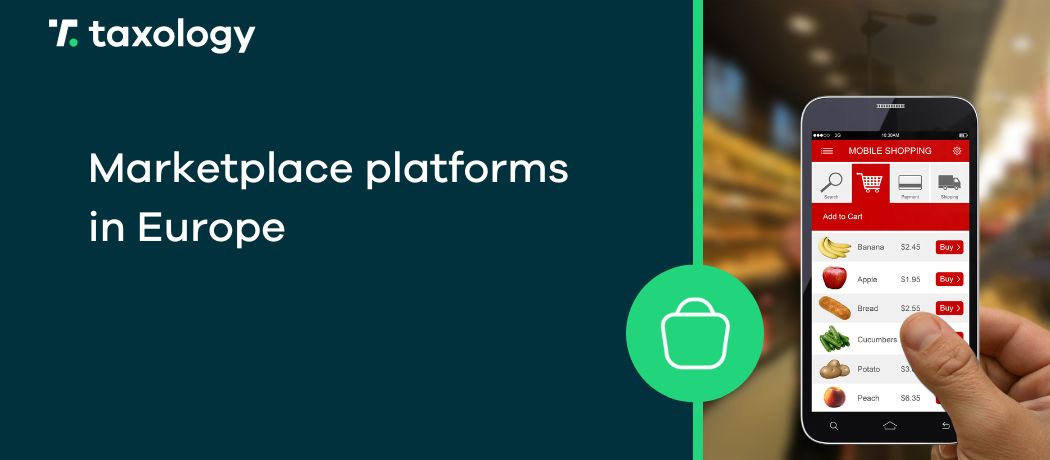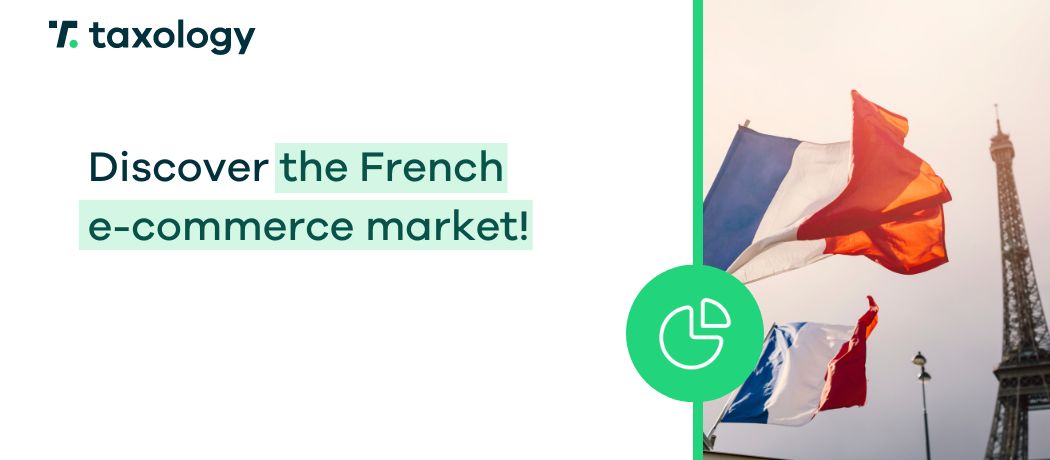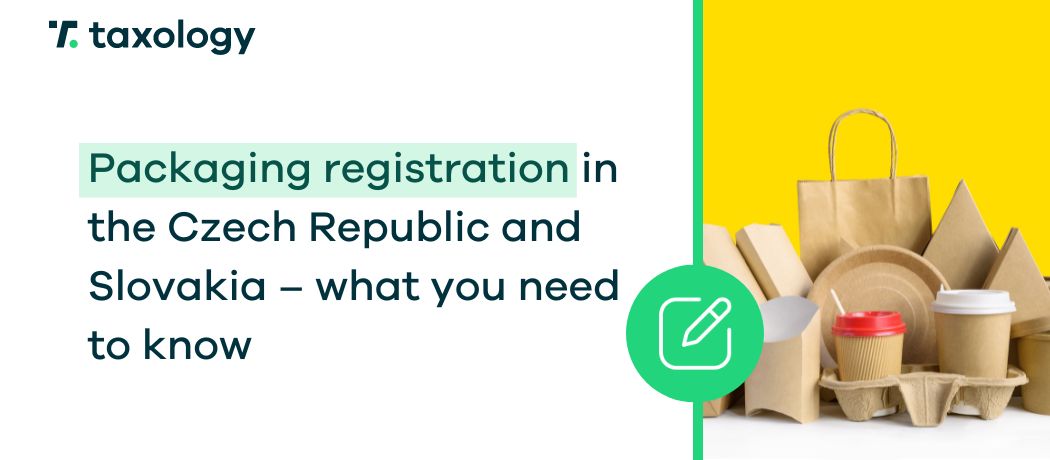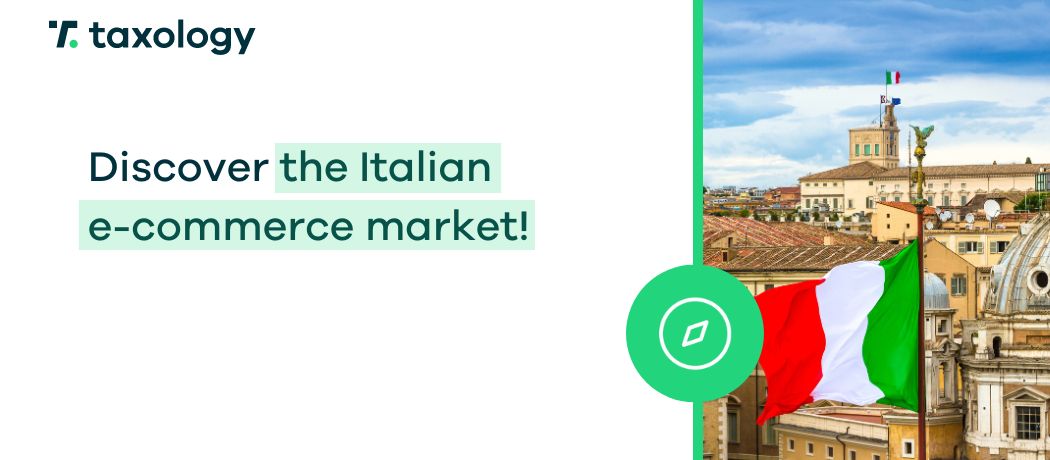France is one of the largest and wealthiest countries in Europe, making it an extremely attractive market for expansion for many entrepreneurs in the e-commerce sector. However, like any other […]
Read in: 5 minMarketplace platforms in Europe
- Last update: 23.02.2024
- Published: 14.02.2023
- Read in: 8 min
The influence of major marketplace platforms in the global e-commerce landscape is constantly expanding, and this trend is equally evident in European markets. Irrespective of the specific country, it is these kinds of websites that consistently achieve high rankings as the most popular destinations on the internet.
What makes sales platforms so immensely successful and which ones dominate in each European country? In the upcoming article, we will provide answers to all these questions.
The convenience of use, extensive product selection, and various convenient features for online selling contribute to the continuous success and dominant positions of giants like Amazon and eBay in European markets.
However, this is not the case in every country. In some countries, major players are in the early stages of expansion or, for the time being, have to make room for regional companies like Netonnet in Sweden, eMAG in Romania, or Allegro in Poland.
In this article we will give you an overview of the leading marketplace platforms in Europe, highlighting their market share in key e-commerce markets.
Why are marketplace sales platforms growing so rapidly?
To unravel the secret behind the success of marketplace platforms, one can gain valuable insights by examining the user’s perspective and the purchasing process.
We will use Amazon as an example and the way this retail platform is committed to ensuring maximum convenience, security and user satisfaction.
Let’s take a look at some of the key elements that make up the so-called user experience (customer experience – CX):
1. The platform's algorithm and buy boxes
Each item on Amazon has one individual product card, regardless of how many vendors offer that product. Within this card, Amazon’s algorithm analyses important sales statistics and directs the customer toward the top-performing seller’s offer, prominently showcased in the ‘buy box’ or featured offer section.
The algorithm takes into account elements such as shipping speed, pricing, or the percentage of returns and complaints. As a result, users can be confident that the suggested offer will be the most appealing in all of these aspects.
2. Fast shipping guaranteed
Swift delivery is a standard guaranteed through advanced logistics procedures for offers managed by Amazon warehouses. Consequently, products frequently reach customers within the same day.
In addition, the majority has a guaranteed fast delivery option. If delivery fails to occur within the specified timeframe, you will be reimbursed for the shipping expenses.
3. Detailed regulations implemented to protect the user.
Amazon has very strict rules regarding e.g.:
- the online sale of hazardous and counterfeit products
- accurate product descriptions
- online sales of cosmetics and pharmaceuticals
- the sale of food
- and many other product categories
The precise rules primarily revolve around safeguarding customers from potential harm and mitigating the risks associated with fraud and vendor manipulation. If any breaches of the rules are detected, vendors may be suspended or permanently removed from the marketplace.
4. Streamlined return policy
To sell on Amazon, vendors must agree to the marketplace’s guidelines regarding product returns or exchanges, which ensure utmost convenience for the user.

Stringent standards upheld by all major platforms.
These customer-centric rules are similarly applicable across virtually all major marketplaces, and it is due to such benefits for customers that a significant portion of the success of these platforms can be attributed. Expanding into new markets poses a significant challenge for companies, as meeting these conditions becomes crucial for achieving successful competition. What challenges do companies face when seeking to sell on foreign marketplaces?
Selling on foreign marketplace platforms can come with its own set of challenges.
In many cases, you do not need to meet the stringent requirements to start selling on foreign marketplaces. The largest platforms are committed to enabling even the smallest entrepreneurs to initiate and grow their sales on their sites. This also applies to the fundamental scenario in which entrepreneurs ship products from their own warehouse to customers in foreign markets. This kind of sales model is allowed, e.g by Amazon.
However, in this case the vendor has to consider these two issues:
- Sales growth can be hindered by customers’ reluctance to endure long waiting times and bear high shipping costs. Moreover, on sales platforms like Amazon, the likelihood of these offers securing the buy box is almost impossible when other vendors provide the same product with faster shipping from the customer’s country.
- Once the yearly volume of mail order sales to EU countries surpasses EUR 10,000, the vendor is obliged to settle VAT in the countries to which they sell or according to the simplified VAT OSS procedure.
To overcome these issues when scaling e-commerce internationally, many find it beneficial to utilize the fulfillment services of foreign companies or leverage Amazon’s FBA model. With this approach, the vendor delegates the services to an external company, which stores the goods in another country and takes care of the entire order fulfillment process, including picking, shipping, and managing returns.
To achieve this, the vendor must register and settle VAT in each country where the goods are warehoused. This requirement can be particularly challenging for companies without the appropriate legal and tax background. However, this process can be streamlined and automated thanks to the VAT compliance service offered by Taxology.
Marketplace sales platforms operating in many European markets
In the following part, we will focus on those platforms that play a significant role on a continental scale. The marketplaces listed in this category predominantly dominate the largest markets in Europe, including the UK, Germany, France, and Spain, thereby securing a substantial market share.
Amazon
Industry: unspecified
Amazon is the most recognised sales platform. It is also the largest marketplace. It offers language versions for most Western European countries, with a significant market share in the UK, Germany, France, and Italy.
Moreover, in numerous aspects like user protection and the exceptional Fulfillment by Amazon (FBA) sales model, the platform sets the benchmark in terms of the shopping experience. It allows to effectively aquire and retain customers. According to an article on Webretailer site, citing data from Similarweb.com, Amazon currently ranks as the most visited marketplace in Europe, boasting nearly one billion monthly visits.
Unlike many other major platforms, Amazon functions as an online shop exclusively for companies to sell their products. n order to list products on this marketplace platform, sellers must adhere to the terms and conditions and fulfill specific requirements. For more information on this topic, you can refer to the article “What can be sold on Amazon?“.
Despite its higher cost, the FBA model offers vendors the advantage of nearly maintenance-free selling on the platform. Amazon takes full responsibility for shipping and order returns, providing a seamless experience for sellers.
It should be noted that, thanks to its advanced logistic processes and warehouse network spread across Europe, Amazon provides swift shipping in many countries, leaving much of the competition biting the dust.
eBay
Industry: unspecified
The eBay platform, operating since 1999, holds a prominent position as the second largest marketplace in Europe. It boasts significant market shares, particularly in the UK and German markets. eBay also plays a notable role in France and Italy, albeit slightly smaller, as it entered these countries a few years later. According to the aforementioned article from Webretailer, which will be referenced in the following paragraphs, eBay receives over 366 million visits per month in total.
This Marketplace operates on a distinct business model, offering vendors slightly more flexibility compared to Amazon in terms of creating product listings and cards. It retains its identity as a partly auction-based platform where regular users can sell their products.
As eBay does not employ a buy box system that heavily favors top sellers, it could potentially be a more accessible marketplace platform for companies that are set on expanding their presence and start selling on new markets. This aspect makes it relatively easier for such businesses to develop their presence on the platform.
Zalando
Industry: fashion, beauty
Zalando holds the 5th position among European e-commerce retailers and possesses a substantial market share in numerous European markets, including:
- Germany
- France
- Netherlands
- Spain
- Poland
- Italy
- Belgium
- Denmark
The primary focus of this Marketplace is apparel, attracting a wide range of vendors including major brands, niche brands, and luxury brands. Similar to Amazon, Zalando’s success can be attributed to its exceptional logistics processes and efficient returns and complaints procedure.
The platform continues to experience significant year-on-year growth rates, solidifying its position as the leading player in its product segment across Europe. On average, 127.1 million users visit Zalando per month.
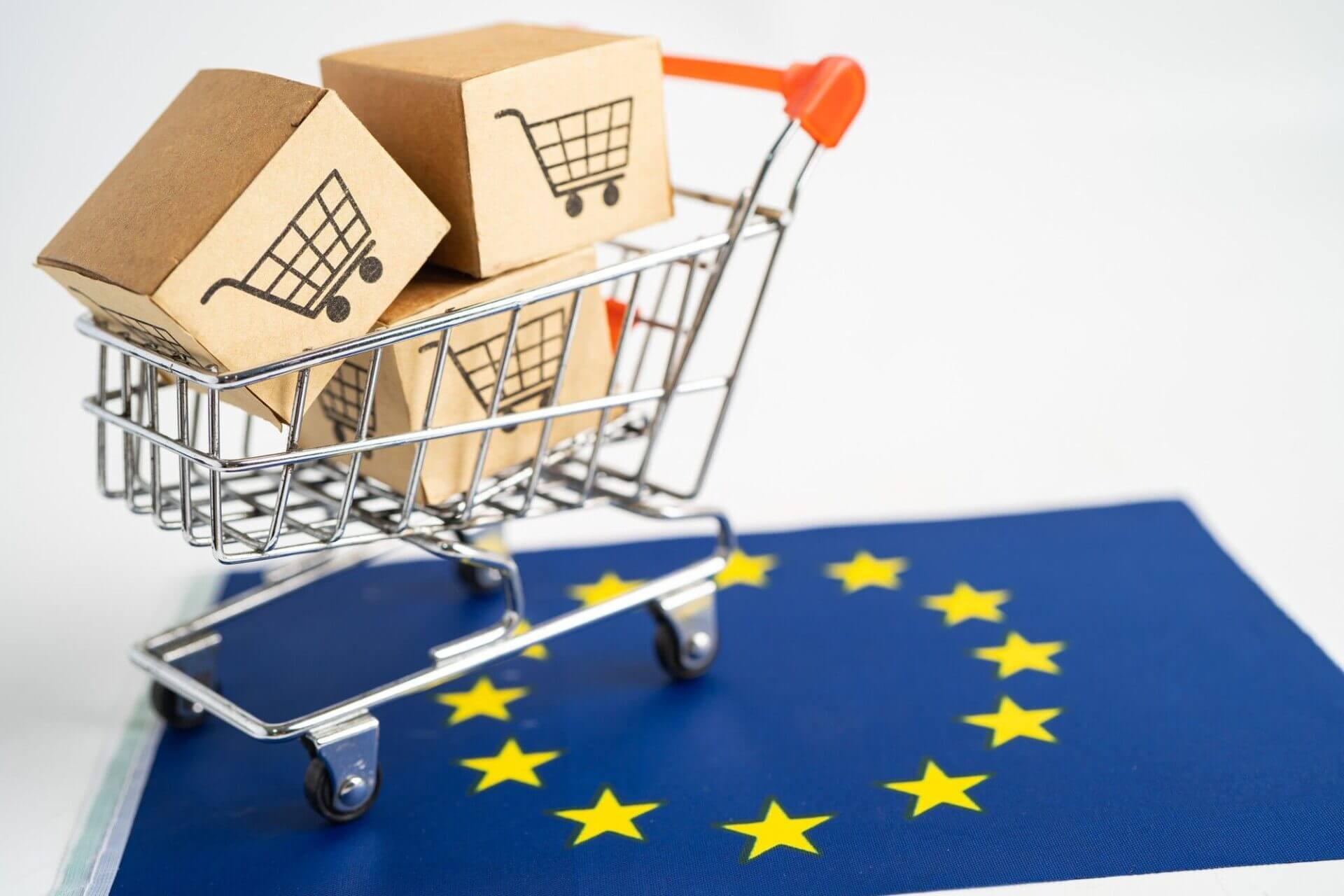
ManoMano
Industry: Home and garden
The French-originated Manomano is gaining traction as it expands its footprint across multiple European countries, solidifying its presence in the marketplace arena. Next to its home country, ManoMano also has many customers in the UK, Belgium or Germany. This platform primarily focuses on household and gardening-related items.
According to the Webretailer ranking, ManoMano holds the 10th place with an average traffic of 44.2 million.
Etsy
Industry: fashion, handcrafts, home
Etsy, a US-based marketplace, that is largely dedicated to connecting artisans and sellers offering a wide range of handmade products such as clothing, jewelry, and furniture. This marketplace platform operates in all major European markets and is steadily growing its share. The platform owes a significant part of its success to its streamlined sales and billing process, allowing even novice entrepreneurs to effortlessly operate it.
Despite its seemingly niche focus, Etsy is one of the fastest growing marketplaces, ranking 13th in Europe with 23.1 million visits per month acoording to Webretailer’s data.
Local marketplace platforms
While Amazon and eBay reign as the predominant platforms across Europe, it is important to note that they face substantial competition in many countries and, in some cases, are surpassed by local platforms. The primary reason behind this scenario, in the majority of cases, is due to the longstanding positioning and trust that local brands have built over several decades, with many of them having been established for over 20 years.
Here are some examples:
Poland - Allegro
Industry: unspecified
Allegro is the undisputed e-commerce leader in Poland. Operating since 1999, the platform quickly became one of the most visited sites on the Polish Internet and over the years has established its position on the Polish market as the largest e-commerce site in this country.
Allegro’s immense popularity is evident as it secured the 3rd position among European marketplaces and 9th globally in Statista’s 2021 marketplace ranking, despite primarily serving the Polish market. With an average of 184.8 million monthly visitors, as reported in the Webretailer article, Allegro continues to attract a substantial user base.
We should add that in April 2022 Allegro acquired two e-commerce companies – the Czech Mall Group and WE|DO. The Polish giant paid PLN 4.1 billion for this transaction.
The Netherlands - Bol
Industry: unspecified
Bol, the leading e-commerce platform in the Netherlands, ranks 9th among the most popular websites in this country. It was founded back in 1999 and offers an extensive range of products across various categories, catering to both the Netherlands and Belgium. Because Bol operates in both the Netherlands and Belgium, it has tailored versions of its site available in those languages. According to Statista, Bol holds a substantial share of approximately 25-30% in the e-commerce market in the Netherlands.
Additionally, Bol attracts a considerable amount of traffic with an average of 78.8 million visits per month.
Germany - OTTO.de
Industry: unspecified
Amazon, as expected, holds the top position in e-commerce in Germany, followed by eBay. However, OTTO, ranked third, also enjoys a significant presence in the market. OTTO.de is a part of Otto GmbH, a global retail and e-commerce conglomerate that owns multiple brands operating worldwide. With its strong position on the German market, OTTO.de serves as a prominent marketplace for companies aiming to sell their products in Germany.
According to Webretailer, OTTO receives an average of 55 million visits per month.
France - Cdiscount
Industry: unspecified
Cdiscount, ranking just behind Amazon, holds the position of the second most popular marketplace in France and the 9th largest in Europe. With a monthly traffic of over 50 million, this platform becomes a crucial player for e-commerce companies aiming to establish a presence in the French market.
While Cdiscount theoretically offers a wide range of product categories, it is primarily renowned for its presence in the electronics sector. part from its strong foothold in France, Cdiscount also serves users in other French-speaking countries, particularly Belgium.
n 2011, the Casino Group corporation, the owner of several prominent French retail chains, acquired the platform from its founders. As a result, the platform integrated with the Casino Group’s network and transformed its stores into convenient drop-off points for Cdiscount customers.
Romania and Hungary - eMAG
Industry: unspecified
eMAG, the leading e-commerce site in Romania, is also highly popular in Hungary. The website ranks as the 4th most visited website on the Romanian internet. Initially, eMAG was an electronics and office equipment shop, but it has gradually expanded its offer and thus consolidated its position as the largest e-commerce site in the country.
Currently, eMAG offers a wide range of product categories, catering to the diverse needs of millions of users. As stated by Webretailer, eMAG holds the 11th position among European marketplaces, with an average of 43.5 million visitors.
Sweden - Netonnet.se and Apotea.se
Industry: electronics for Netonnet and unspecified when it comes to Apotea.se
From the sales perspective, Netonnet and Apotea are the leading players in the Swedish e-commerce market. Netonnet specialises in consumer electronics and household appliances, while Apotea offers a wide range of product categories, including fast-moving consumer goods (FMCG).
Netonnet experienced significant website traffic in December with over 5 million visits, followed by over 4.5 million in January and over 3.5 million in February. In comparison, Apotea had a higher number of visits, reaching 6.5 million in December, nearly 7 million in January 2023, and 6 million in February.
It’s important to note that the information provided in this paragraph, which is not part of the Webretailer ranking, is sourced from Similarweb. We used Similarweb data to describe the marketplaces in subsequent sections of the article.
Spain - El Corte Inglés
Industry: fashion, beauty and home
l Corte Inglés, Spain’s largest chain of shopping centers, also holds the position of being the second largest e-commerce site in the country, with Amazon.es taking the lead. Similar to their physical shopping centers, the online platform of El Corte Inglés primarily emphasizes clothing, cosmetics, and home-related products, while also offering categories such as electronics and household appliances.
Over the last three months, El Corte Inglés recorded 42.1 million, 45.1 million and 29 million visits respectively.
Portugal - Worten
Industry: unspecified
Worten, the popular e-commerce platform in Portugal, functions as a hybrid marketplace and service hub, linking customers with service providers such as technicians and mechanics. It holds the top position as the most visited sales platform in Portugal, surpassing both Amazon and fnac.pt.
While Worten may not be as large as some of the aforementioned marketplaces, it holds a prominent position in Portugal as the leading platform of its kind. In terms of website visits, it achieved impressive numbers with 13.7 million visits in December 2022, followed by 11.4 million in January and 9.1 million in February.
Denmark - Elgiganten
Industry: Electronics
This Scandinavian e-commerce company, specializing in electronics, holds a significant position in the market, with an annual revenue of $312 million, it ranks just behind Zalando. it has established itself as a key player over its nearly 30 years of operation. While primarily dominant in Denmark, the brand has also expanded its presence in Sweden. In Norway, it operates under the name Elkjøp, and in Finland, it is known as Gigantti.
Based on Similarweb data, Elgiganten’s specific page views showed the following results in December 2022, January, and February 2023:
- elgiganten.se: 8 million, 6.7 million, 5.7 million
- elgiganten.dk: 4.1 million, 3.6 million, 2.8 million
- elkjøp.no: 8.4 million, 6.6 million, 5.5 million
- gigantti.fi: 5.3 million, 4.8 million, 3.8 million
Facilitating the expansion into foreign sales platforms on marketplaces
Vendors are receiving a resounding message from available statistics: marketplace platforms are the future and offer tremendous opportunities for expanding into foreign markets.
However, to truly maximize their potential, the assistance of other companies, such as those specializing in fulfillment, marketing, or customer service, can prove invaluable in many instances. In fact, we encourage you to check out our article on companies supporting e-commerce, where we delve deeper into this topic. If your company requires professional assistance with VAT and accounting processes for international operations, don’t hesitate to reach out to us for expert support.
If you want to read more, check our articles about:
- Amazon Seller Central and Amazon Vendor Central
- E-commerce payment systems in Europe
- Incoterms 2020
- Split Payment Mechanism
- Consignment warehouse.
And if you want to broaden your knowledge about VAT, you can read about VAT registrations in: Germany, France, Italy, Spain and the UK, the European VAT rates and issues that may arise during the registration in Great Britain.
